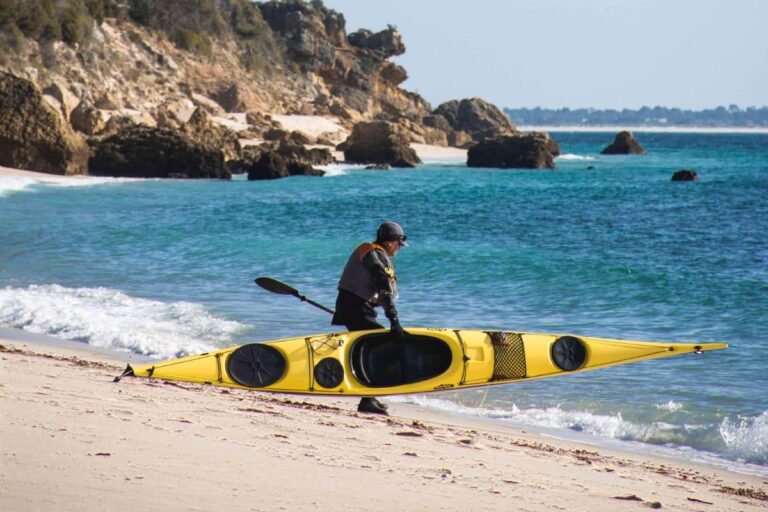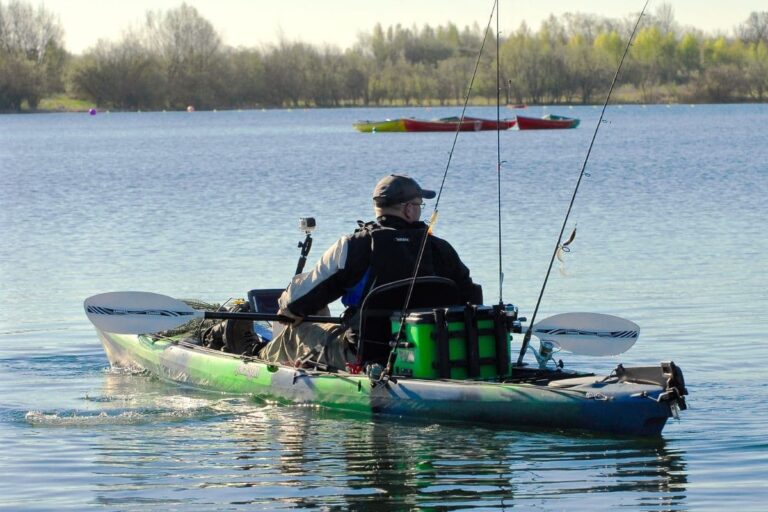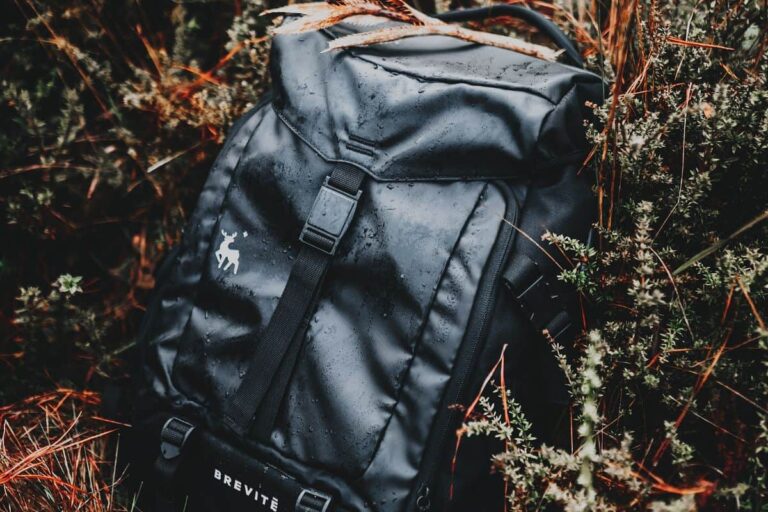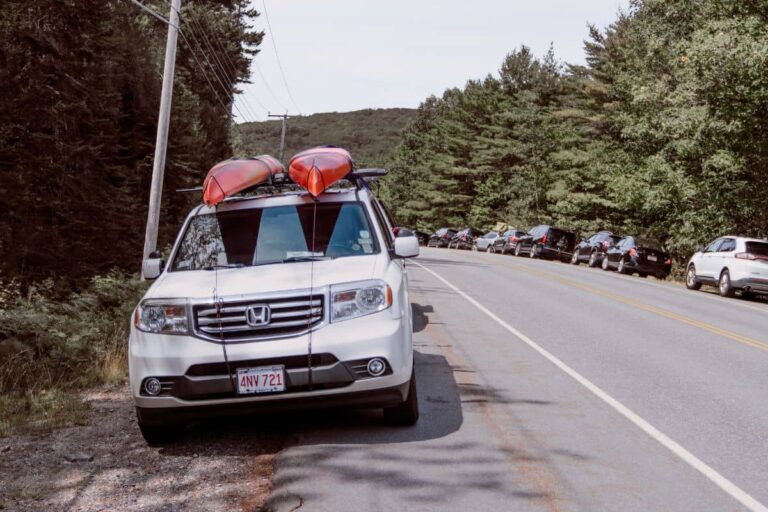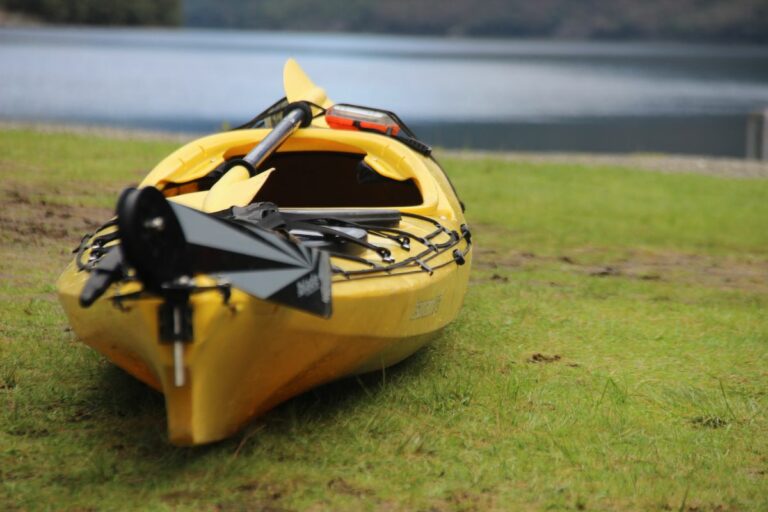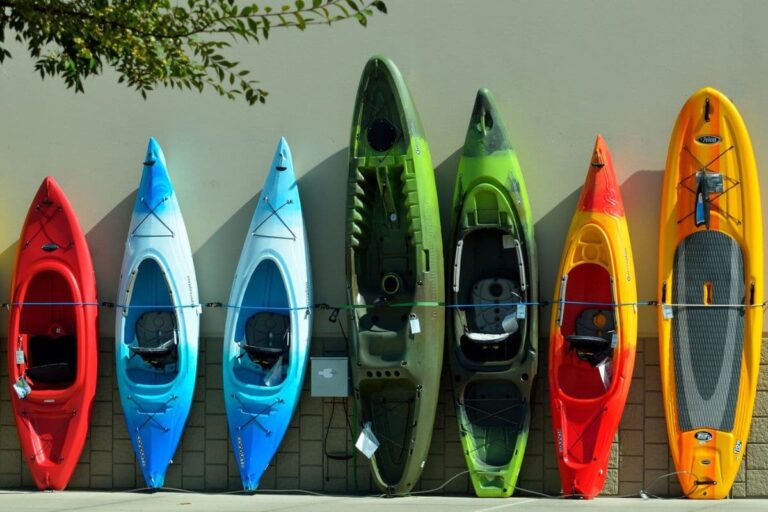How Can You Stay Safe When Kayaking?
If you are planning to take any kind of kayaking trip, it’s important to be aware of potential hazards, as well as familiarize yourself with essential safety tips.
The majority of kayaking incidents are due to dehydration, heat stroke, hypothermia, injury, and various operator errors. In order to avoid the dangers of kayaking, it’s essential to follow these important safety tips.
In this article, we will discuss some of the dangers of kayaking, along with several important kayak safety tips to help you avoid risk, so you can ensure that your experience is fun and memorable.
Almost 80% of kayaking incidents are caused by hypothermia, which is often due to low water temperature. Lacerations and internal organ injuries trailed way behind, but still made the list.
Most personal injuries and incidents occur because of operator errors. As a kayak operator, you must be constantly alert and diligent so you ensure the highest level of safety.
The Most Common Dangers Of Kayaking And How To Prevent Them
Dehydration
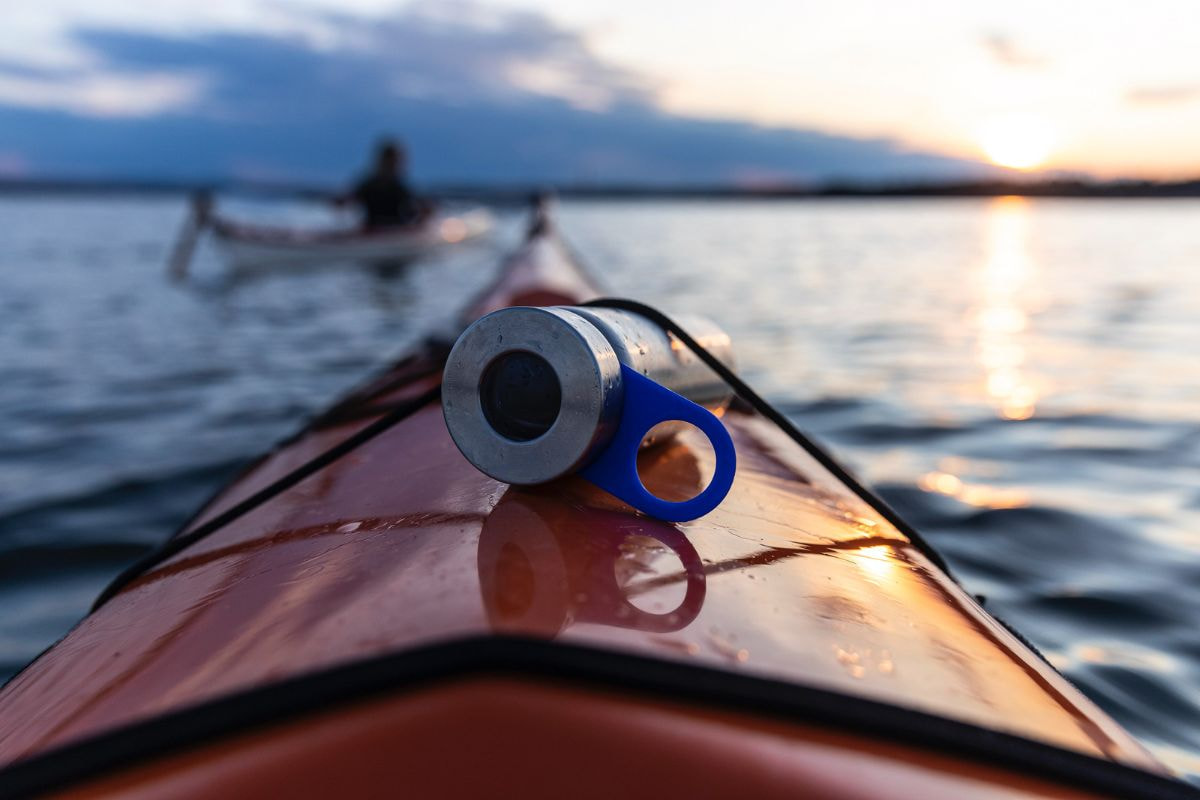
Dehydration is one of the most common occurrences faced by inexperienced kayakers. Kayaking is a vigorous activity that can cause you to become dehydrated quickly.
As with any exercise, it’s crucial to stay well-hydrated and eat snacks that are full of protein and nutrients. Consider packing these snacks in a dry bag so they’re ready for you to eat!
In addition to hydrating before your trip, it’s also wise to bring an ample supply of water with you on your adventure. Consider having two extra gallons of water with you.
Heatstroke
Heatstroke and sun-stroke are dangerous conditions that can occur due to excessive sun exposure and physical overexertion. Symptoms include high temperature, confusion, dizziness, rapid heartbeat, and muscle cramps.
You can do your best to prevent these issues by using strong sunscreen and keeping an eye on the weather forecast. Also remember to hydrate properly.
The time of the day during which you kayak can also make a difference. Be mindful of warm weather conditions, and try not to go out at the hottest times of the day, especially in the middle of summer.
Instead, it’s best to consider waiting to kayak until the weather cools down in the late afternoon. Even when you go kayaking in the evening, you still need to wear a sun hat and other appropriate clothing that provides sun protection and keeps you cool.
Distractions and Intoxication

Distractions can cause problems for any “driver,” including anyone operating a kayak. It’s important to keep your focus on navigating the waters, and avoid allowing yourself to become distracted.
By maintaining focus, you’ll be more likely to notice when weather patterns change, and be observant of any obstacles you may encounter, whether you’re in deep or shallow water.
If you prefer to use a sit-inside kayak, you will also need to practice how to execute a wet-exit, which involves getting out of your kayak while you are underwater. In the event that your boat turns over and you need to perform a self-rescue, it’s essential that you stay fully alert.
It’s also a good idea to practice re-entering your kayak when you are in calm, shallow water.
Furthermore, it’s highly recommended to go kayaking with a partner. Having another person with you is always advisable in order to ensure basic safety.
Just like with any other kind of watercraft, you should never drink alcohol or partake in drug use before you kayak. It can also pose a significant risk to operate the boat after taking some types of prescription medication.
Improper Use of Life Jackets
Your life jacket or personal flotation device must be worn properly in order to ensure safety.
It’s important to undergo appropriate life jacket training before you begin to operate a kayak. By doing so, you’ll have full protection if you experience an incident that causes your boat to overturn.
It’s also necessary to wear a life jacket because it can help other people locate and assist you more easily if something goes awry.
If you have a hard time finding a comfortable life jacket, try wearing a kayaking-specific life jacket. These safety garments are specifically designed to stay out of your way when paddling.
Inexperience
Many accidents occur because kayakers are simply inexperienced. Practice is the most effective remedy for lack of experience.
You may want to consider taking lessons with a qualified instructor before you delve into the world of kayaking. If you’re a beginner, it’s also a good idea to consider kayaking in flat water that fits your skill level, such as quiet lakes and calm bays.
Finding a suitable kayaking location is important for beginners. Unseasoned kayakers should not try sea kayaking without the company of experienced paddlers, as off-shore winds can sneak up on you.
It’s best to increase your exposure to deep and cold water slowly, until you have the prowess to navigate any obstacles that may arise. As you increase your paddling skills, you should also aim to hone your ability to monitor weather and water conditions.
If you’re interested in trying ocean kayaking, be sure to check the National Marine Forecast before each trip regularly, which is located online. Continue to monitor sea conditions in the hours before beginning your kayaking trip, and don’t be afraid to reschedule if high winds are expected.
Aim to avoid areas with heavy motorized boat traffic, and try to stay out of the surf zone as well. It’s also smart to have a first aid kit with you in your kayak at all times, no matter what type of paddling environment you’re in.
Hypothermia
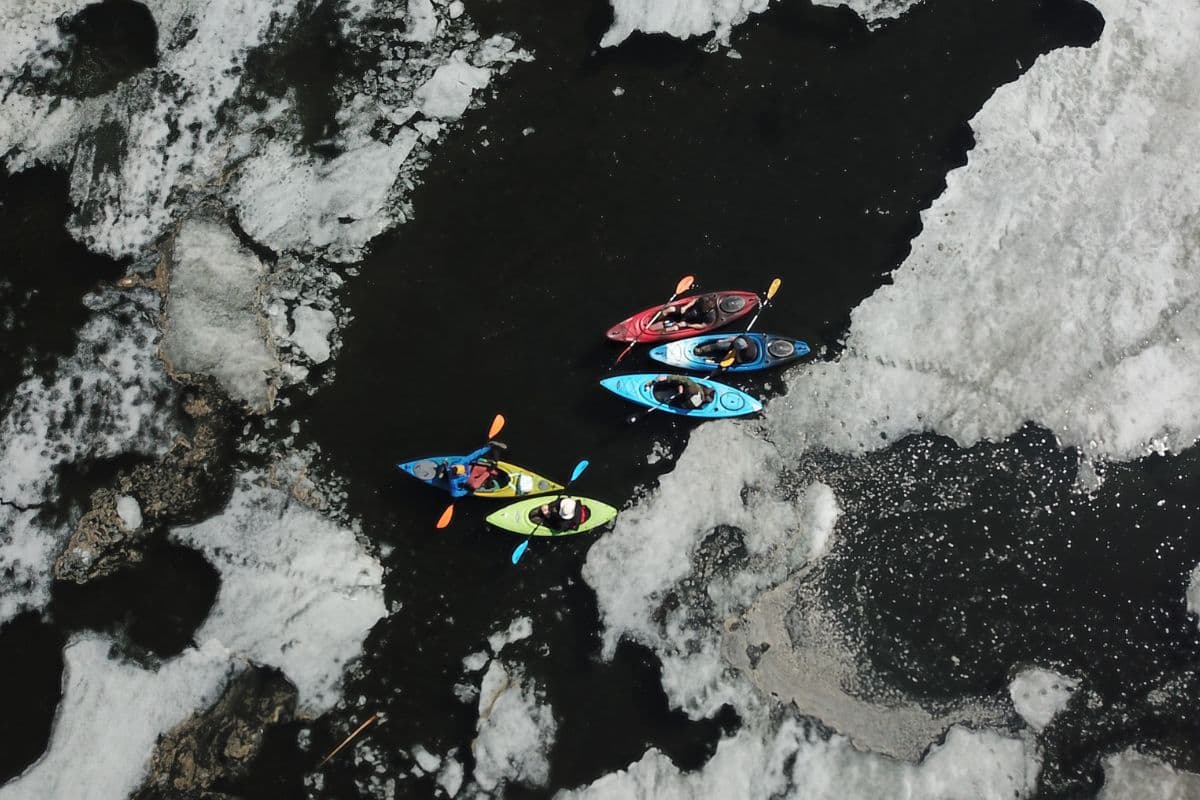
As mentioned above, hypothermia is one of the most common kayaking dangers. This condition can occur if you are too wet amidst strong winds, or if something causes you to become submerged in cold water.
Symptoms of hypothermia include uncontrolled shivering, confusion, and slurred speech. If you experience any of these symptoms, you need to get yourself to a warm area and bring your temperature up as soon as possible.
If you plan to kayak in cold water, consider buying or renting a wet suit or dry suit. Even weather-appropriate clothing, such as quick-dry and moisture-wicking fabric, can do you a world of good.
Getting Lost
Many people become lost at sea because they don’t follow appropriate protective measures. You can avoid getting lost by taking a few important steps ahead of time:
First, consider taking a GPS along with you. Your mobile phone may work, depending on the area in which you plan to kayak.
A communication device, such as a VHF radio, is also an investment worth considering. This device allows you to broadcast a message to other ships and shore stations in the event that you are in distress.
These types of equipment should be placed in dry bags to ensure that they stay safe, even if your kayak turns over.
It’s also advantageous to have a spotter to help you. A spotter is someone who knows your float plan and can keep track of your position at all times.
Additionally, it’s a good idea to wear bright clothing so you can be easily spotted in the event that the US Coast Guard needs to come to your rescue. Don’t attempt a multi-day excursion without the company of an experienced kayaker.
Wrist Strains
Wrist strains and injuries are very common in the kayaking world, but there are a few steps you can take to prevent them.
For example, try exercising your wrists before you venture out onto the water.
It also might be useful for you to invest in a lightweight paddle. Most wrist strains come from the constant pressure a heavy paddle puts on the wrists.
Allowing your hands to relax and while your paddle floats every so often is also a good way to give your wrists a break. Remember that while you may hope to have a time-efficient trip, there is wisdom in slowing down and taking breaks periodically.
Most sporting goods stores should have a variety of kayaking safety equipment, such as wrist guards, that can help you protect yourself.
Impact Injuries
Impact injuries often occur because of the various types of motion and jolts that occur during the process of paddling. They can also happen if your kayak hits something.
You can avoid these kinds of injuries by going through a proper warm-up process before you engage in kayaking activities. Stretching your neck and shoulders beforehand can help to loosen them up and lessen the likelihood of experiencing an injury.
Positioning your neck to use deep neck flexors while you kayak is another good way to add some stability to your neck and shoulders. Trying to avoid rounding your shoulders forward can help to minimize injury as well.
Frequently Asked Questions
What Should I Eat Before Kayaking?
If you’re planning to kayak, you should always eat ahead of time the same way you would if you were going to a fitness center to work out — after all, paddling is great exercise!
Try having a meal at least one hour before you go kayaking, and make sure it has plenty of protein.
What’s the Right Way to Paddle?
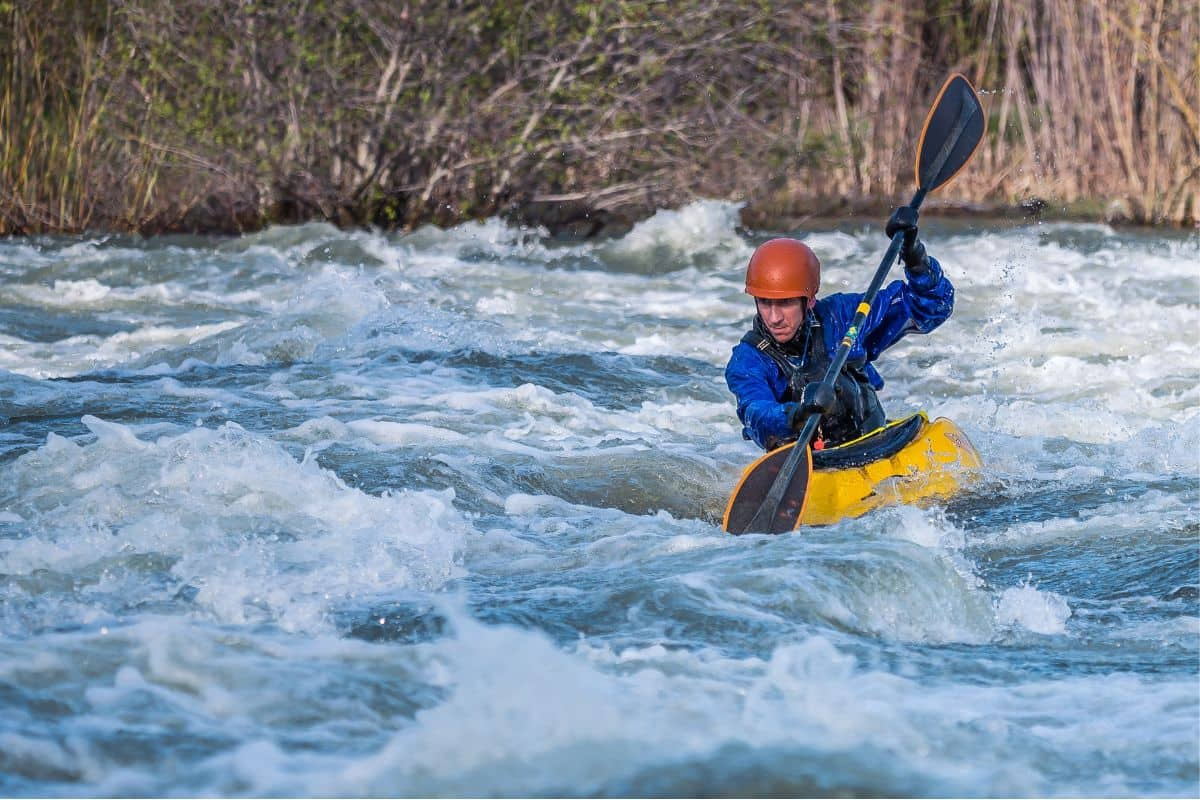
Keep a broad and loose grip on your paddle, keep both of your hands at an equal distance from the blades, and keep your arms straight at all times.
For the most comfort while kayaking, you should sit up tall and straight and bend your knees slightly. Do all you can to ensure that you sit up as straight as possible, and avoid leaning back.
How Can I Tell When the Weather Changes While Kayaking?
The weather is one thing you’ll always want to keep an eye on when kayaking.
To do so, be sure to read the weather reports each day before your adventure.
Once you’re on the water, look for changes in the sky, such as unexpected clouds, wind gusts, and moist air.
You may want to consider getting out of the kayak if you notice any of these changes while you’re out there.
The goal is to keep yourself out of harm’s way by staying on top of the weather.
This is why weather needs to remain your main focus throughout the course of your kayaking adventure.
What Are The Essential Kayaking Protective Items?
There are a few basic safety items that are always important to have on board.
Here are a few things you should never kayak without:
A life jacket is something you need, no matter how quick or short your kayaking trip is.
It will keep you afloat in an emergency and notify other people that you’ve fallen into the water.
A bilge pump is another essential kayaking safety tool to bring along.
It can help you pump water out of your boat if you get some inside the kayak while you’re paddling.
GPS systems and compass units can help you stay on track at all times.
It’s important to have one of these units with you throughout the entirety of your kayaking trip.
Flashlights or other equipment that lights are helpful if you ever lose light and need to find your way to safety.
Conclusion
It’s important to ensure everyone’s safety during a kayaking adventure.
A kayak trip can be highly enjoyable, as long as you protect yourself and your loved ones along the way.
For more personalized tips, try reaching out to the paddling community where you live.
Other paddlers will be able to give you more details about the kayak safety rules in your particular area, and may even offer a float plan for the best water near you.
Table of Contents

